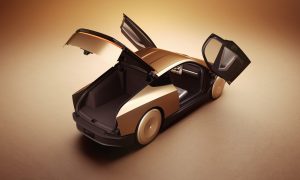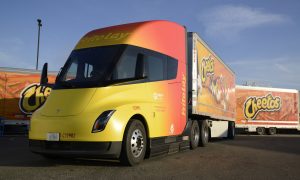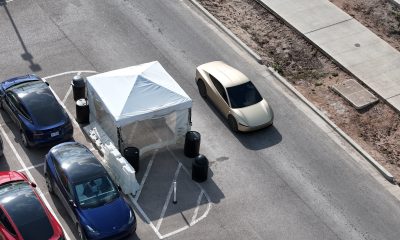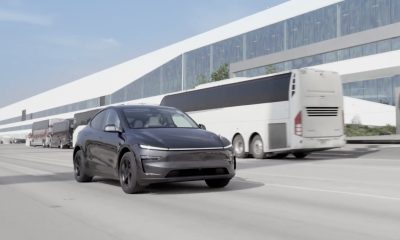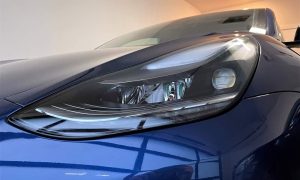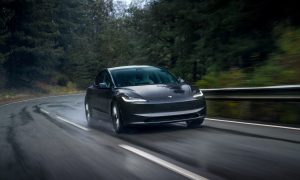News
Details behind Model X owner’s $5M+ class action lawsuit against Tesla
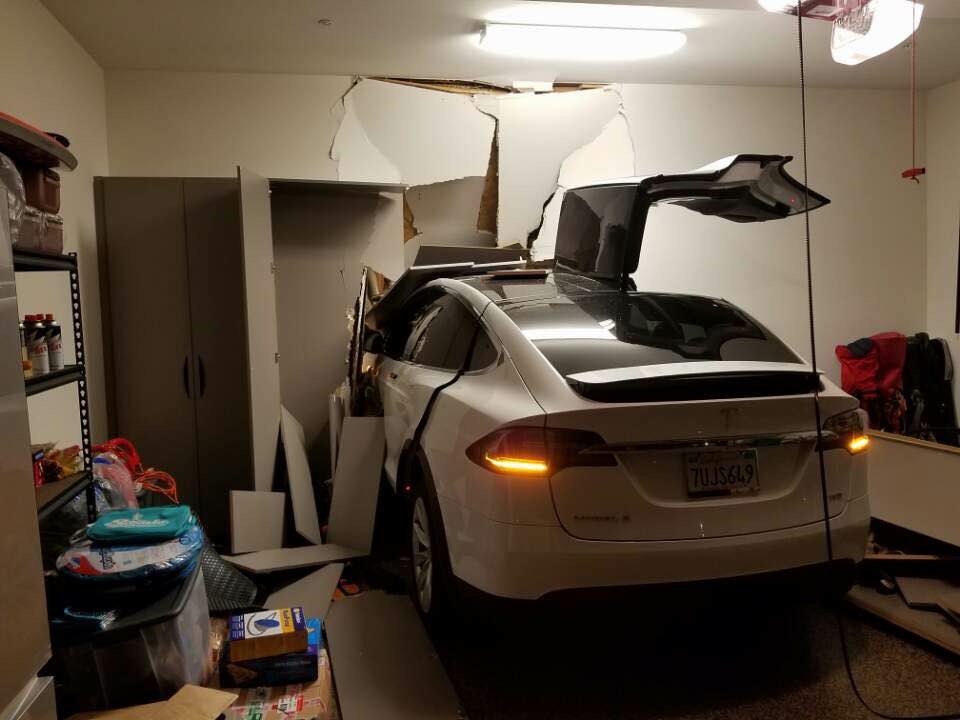
Following our report that a Model X owner has filed a class action law suit against Tesla, claiming a widespread defect in the vehicle’s onboard software causes sudden unattended acceleration (SUA), new details behind the suit have been obtained by Teslarati that shows a legal team aggressively targeting the core component to the Silicon Valley-based electric car maker’s fleet of vehicles.
The class action filed in federal district court claims Ji Chang Son – Korean star residing in Orange County, Calif. – crashed through his garage and into the living room of his home after his Tesla Model X accelerated suddenly and without warning on September 10, 2016, approximately one month after Mr. Son took delivery of the electric SUV. The suit claims that “Tesla has failed to properly disclose, explain, fix, or program safeguards to correct the underlying problem of unintended acceleration”, adding that “over sixteen thousand Model X owners with vehicles that could potentially accelerate out of control.
Son’s attorneys gave the court a full account of the development of the Model X, focusing on the company’s claim that the Model X is “the safest, fastest and most capable sport utility vehicle in history.” On the contrary, according to Son’s attorneys. They allege the Model X has a safety defect that permits the car to accelerate at full speed directly into solid objects, such as the exterior wall of Son’s home. In particular, they point out that 8 written complaints have already been filed with the National Highway Transportation Safety Administration from other Model X owners who report similar occurrences while driving their cars.
The lawsuit reads,
“Irrespective of whether the SUA events in the Model X are caused by mechanical issues with the accelerator pedal, an unknown failure in the electronic motor control system, a failure in other aspects of the electrical, mechanical, or computer systems, or some instances of pedal misapplication, the Model X is defective and unsafe. Tesla’s lack of response to this phenomenon is even more confounding when the vehicle is already equipped with the hardware necessary for the vehicle’s computer to be able to intercede to prevent unintended acceleration into fixed objects such as walls, fences, and buildings.
Despite repeated instances of Model X drivers reporting uncommanded full power acceleration while parking, Tesla has failed to develop and implement computer algorithms that would eliminate the danger of full power acceleration into fixed objects.This failure to provide a programming fix is especially confounding for a vehicle that knows when it is located at the driver’s home and is being parked in the garage, yet carries out an instruction, regardless of whether through an error by the vehicle control systems or by driver pedal misapplication, to accelerate at full power into the garage wall.
Further, not only has Tesla failed to fix the problems, it has chosen instead to follow in the footsteps of other automobile manufacturers and simply blame the driver.”
One problem, according to Son’s attorneys, is the software that controls the Automatic Emergency Braking system. Tesla has programmed that feature to disengage in order to allow drivers to make emergency maneuvers, “in situations where you are taking action to avoid a potential collision. For example:
- You turn the steering wheel sharply.
- You press the accelerator pedal.
- You press and release the brake pedal.
- A vehicle, motorcycle, bicycle, or pedestrian, is no longer detected ahead.”
In other words, say the attorneys, a Model X will drive straight into a solid wall if that is what the system thinks the driver wants it to do. “Apparently, this includes situations where the computer believes, rightly or wrongly, that the driver is commanding full power acceleration directly into fixed objects immediately in front of the vehicle.”
Class action lawsuits are complex and highly specialized legal actions. Federal law requires that the damages alleged for the entire class exceed $5 million. The plaintiff’s attorney have done so by claiming that Tesla is aware of at least two other instances in which drivers allege sudden unintended acceleration occurred while driving their Model X at low speeds. They then extrapolate those numbers to suggest that the rate of SUA incidents attributable to the Model X is 64 per 100,000 vehicles — substantially higher than for any other vehicle in history.
They point out that the incidence rate of SUA incidents for Toyota vehicles — which grabbed national headlines in 2010 — was far lower. They then go on to remind the court that Toyota paid several hundred million dollars to SUA victims as well as a $1.2 billion federal fine. Notice that the chart included in the pleadings shows an exaggerated and disproportionate projected SUA incidence rate for the Model X highlighted in bright red.
Tesla says its data retrieved from the vehicle’s blackbox shows the accelerator in Son’s Model X was fully depressed when the accident occurred. The question for the court will be whether the driver pressed the wrong pedal or whether the vehicle accelerated on its own. It is unclear whether a software failure would register the pedal as fully depressed even if it was not physically operated by the driver.
Plaintiffs always have the burden of proving their allegations. Attorneys for injured parties often rely on a legal doctrine known as res ipsa loquitur, which is Latin for “the thing speaks for itself.” Loosely translated, it means “we don’t know what is wrong with your product that you designed and built, but you know or should know.” Res ipsa loquitur shifts the burden of proof onto the defendant, which makes it much easier for a plaintiff to prevail in court.
One advantage the plaintiff gains from filing suit is the ability to discover what information Tesla has that is not yet public. Does Tesla know something it isn’t telling its customers? We may find out as this litigation goes forward.
We’ve provided a copy of the entire class action filing below.
[pdf-embedder url=”http://www.teslarati.com/wp-content/uploads/2017/01/Son-vs-Telsa-class-action-8-16-cv-2282.pdf”]
Elon Musk
Tesla doubles down on Robotaxi launch date, putting a big bet on its timeline
Tesla continues to double down on its June goal to launch the Robotaxi ride-hailing platform.
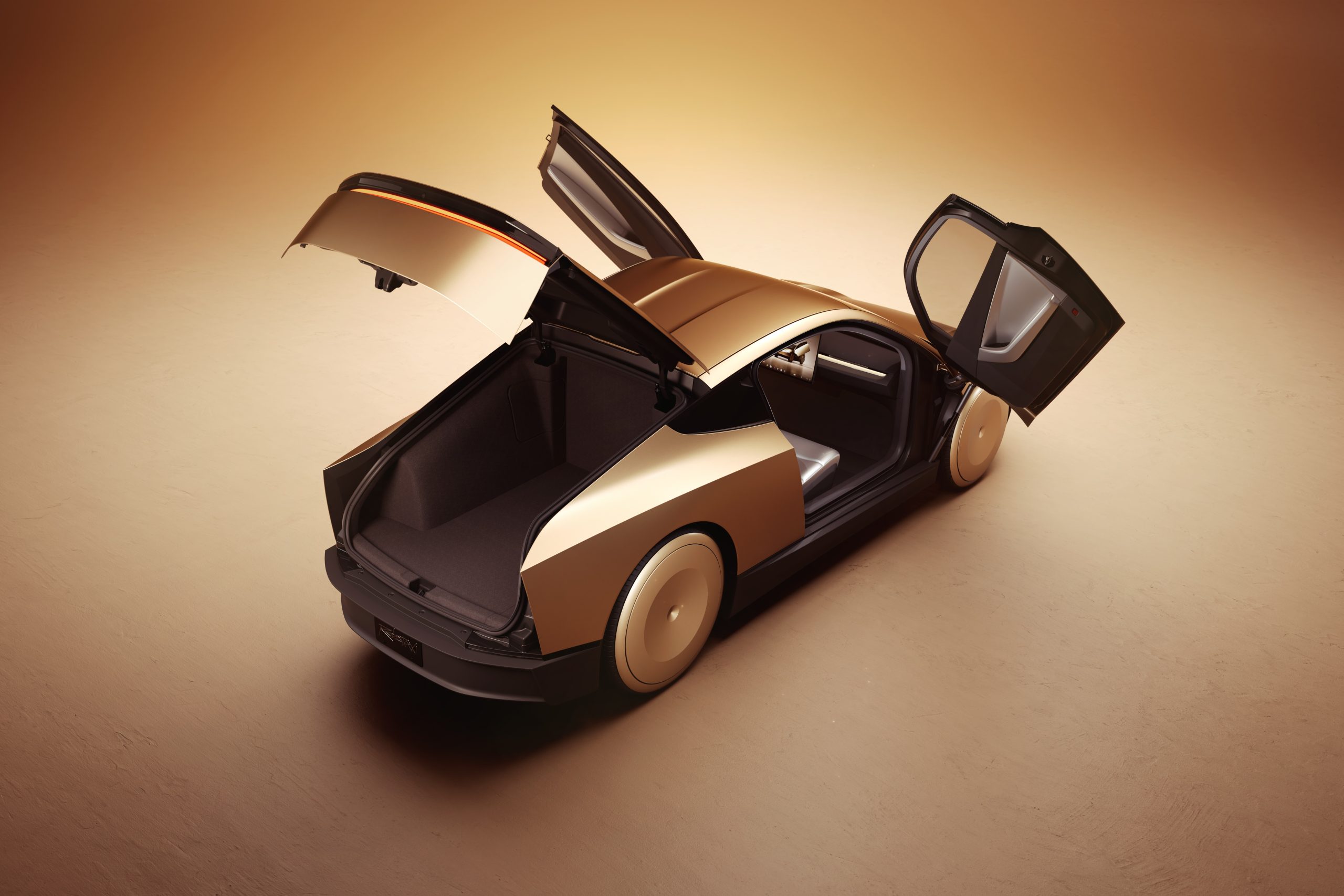
Tesla has doubled down on its potential launch date for the Robotaxi ride-hailing platform, which will utilize the Cybercab and other vehicles in its lineup to offer driverless rides in Austin, Texas.
Tesla said earlier this year that it was in talks with the City of Austin to launch its first Robotaxi rides, and it planned to launch the platform in June.
This has been a widely discussed timeline in the community, with some confident in the company’s ability to offer it based on the progress of the Full Self-Driving suite.
However, others are skeptical of it based on Tesla’s history of meeting timelines, especially regarding its rollout of FSD.
Nevertheless, Tesla was asked when it would be able to offer Robotaxi rides and where, and it clearly is not backing down from that June date:
In Austin, 🔜
— Tesla (@Tesla) April 18, 2025
It is getting to a point where Tesla is showing incredible confidence regarding the rollout of the Robotaxi in June. We have not seen this kind of reiteration regarding the rollout of something regarding autonomy from Tesla at any point in the past.
CEO Elon Musk has even been increasingly confident that Tesla will meet its target. Earlier this week, he said the vehicles will be able to roll off production lines and drive themselves straight to a customer’s house:
Elon Musk continues to push optimistic goal for Tesla Full Self-Driving
There could be some discussion of an acceptable grace period, as the timeline for the Robotaxi rollout could still be considered a success, even if it were a month or two late. However, if it were pushed back further into 2025 or even 2026, skepticism regarding these timelines would continue to persist.
As of right now, it seems Tesla is extremely confident it will meet its goal.
Elon Musk
Tesla Semi fleet from Frito-Lay gets more charging at Bakersfield factory
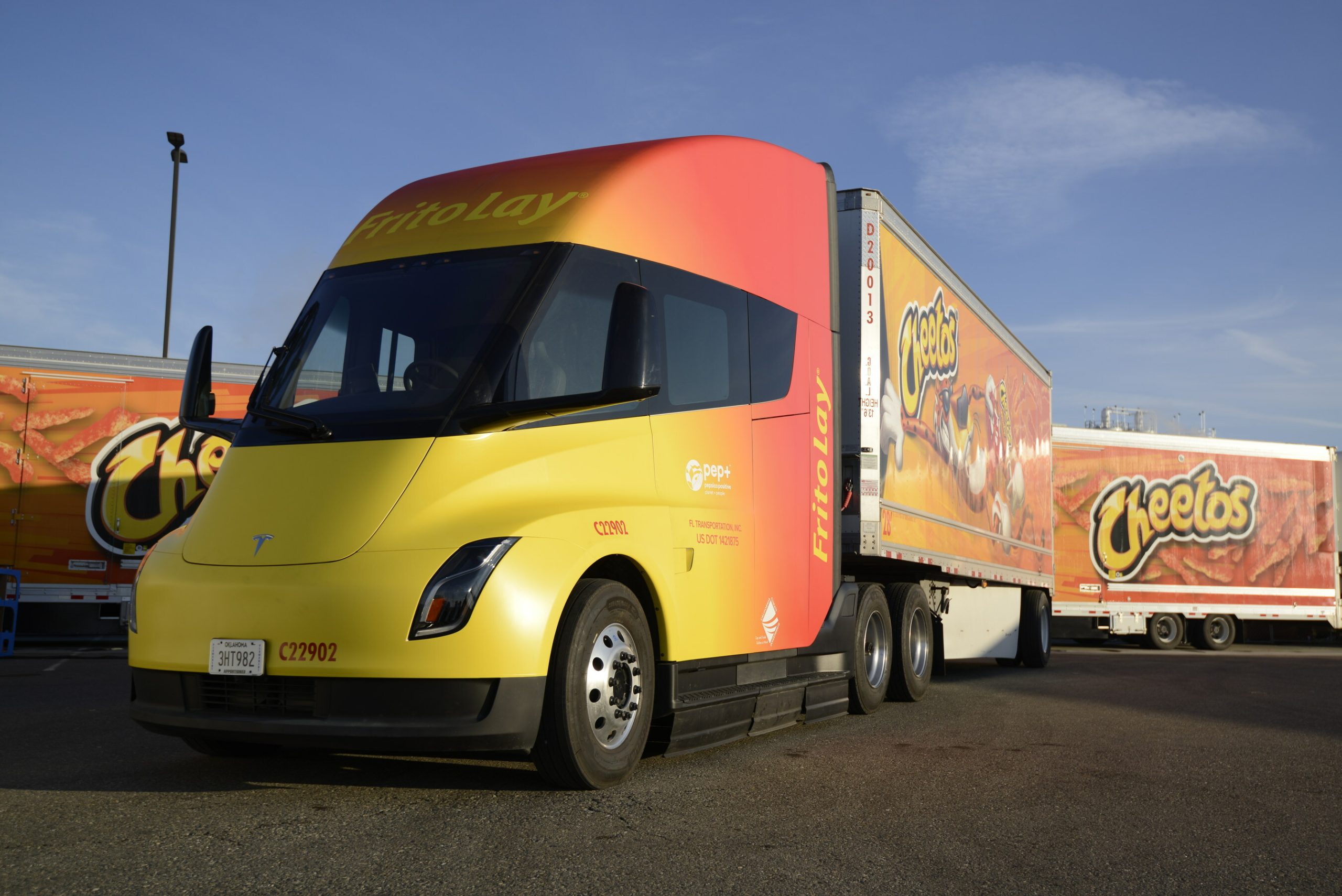
Among the several companies that have had the opportunity to add Tesla Semi all-electric Class 8 trucks to their fleets earlier than others, the most notable is arguably Frito-Lay, which has utilized the vehicle for a couple of years now.
However, as their fleet is making more local runs and there are undoubtedly plans to expand to more Semi units, the company has recognized it needs additional Megachargers to give juice to their trucks.
As a result, Frit-Lay decided to build more chargers at their Bakersfield, California facility, according to new permits filed by Tesla:
🚨 Frito-Lay is building an 8-stall Megacharger array at its factory in Bakersfield, California https://t.co/qARfJjogXF pic.twitter.com/gvorIVxsoc
— TESLARATI (@Teslarati) April 18, 2025
There are already chargers at the company’s Modesto, California, factory, but Bakersfield is roughly three hours south of Modesto.
Interestingly, Tesla is calling the chargers “Semi Chargers” in the filing, potentially hinting that it is no longer referring to them as “Megachargers,” as they have been in the past. This is a relatively minor detail, but it is worth taking note of.
In 2022, Frito-Lay began installing these chargers in preparation for the Semi to become one of the company’s main logistics tools for deliveries in California and surrounding states.
Frito-Lay is not the only company that has chosen to utilize the Tesla Semi for these early “pilot” runs. PepsiCo has also been a company that has used the Semi very publicly over the past two years.
Additionally, the Tesla Semi participated in the Run on Less EV trucking study back in late 2023, where it managed to complete a 1,000-mile run in a single day:
Tesla Semi logs 1,000-mile day in Run on Less EV trucking study
Tesla is planning to ramp production of the Semi late this year. On the Q4 2024 Earnings Call, VP of Vehicle Engineering Lars Moravy said the company would be focusing on the first builds of the Semi’s high-volume design late this year before ramping production in the early portion of 2026:
“We just closed out the Semi factory roof and walls last week in Reno, a schedule which is great with the weather. In Reno, you never know what’s going to happen. But we’re prepping for mechanical installation of all the equipment in the coming months. The first builds of the high-volume Semi design will come late this year in 2025 and begin ramping early in 2026.”
Tesla will build these units at a new Semi production facility located in Reno near its Gigafactory. The company is getting closer to finishing construction, as a drone video from this morning showed the facility is coming along at a good pace:
🚨Tesla Semi factory progress update: pic.twitter.com/dlzIjKwfT3
— TESLARATI (@Teslarati) April 18, 2025
News
Tesla Cybercab no longer using chase vehicles in Giga Texas
Elon Musk expects Tesla to produce about 2 million Cybercab units per year.
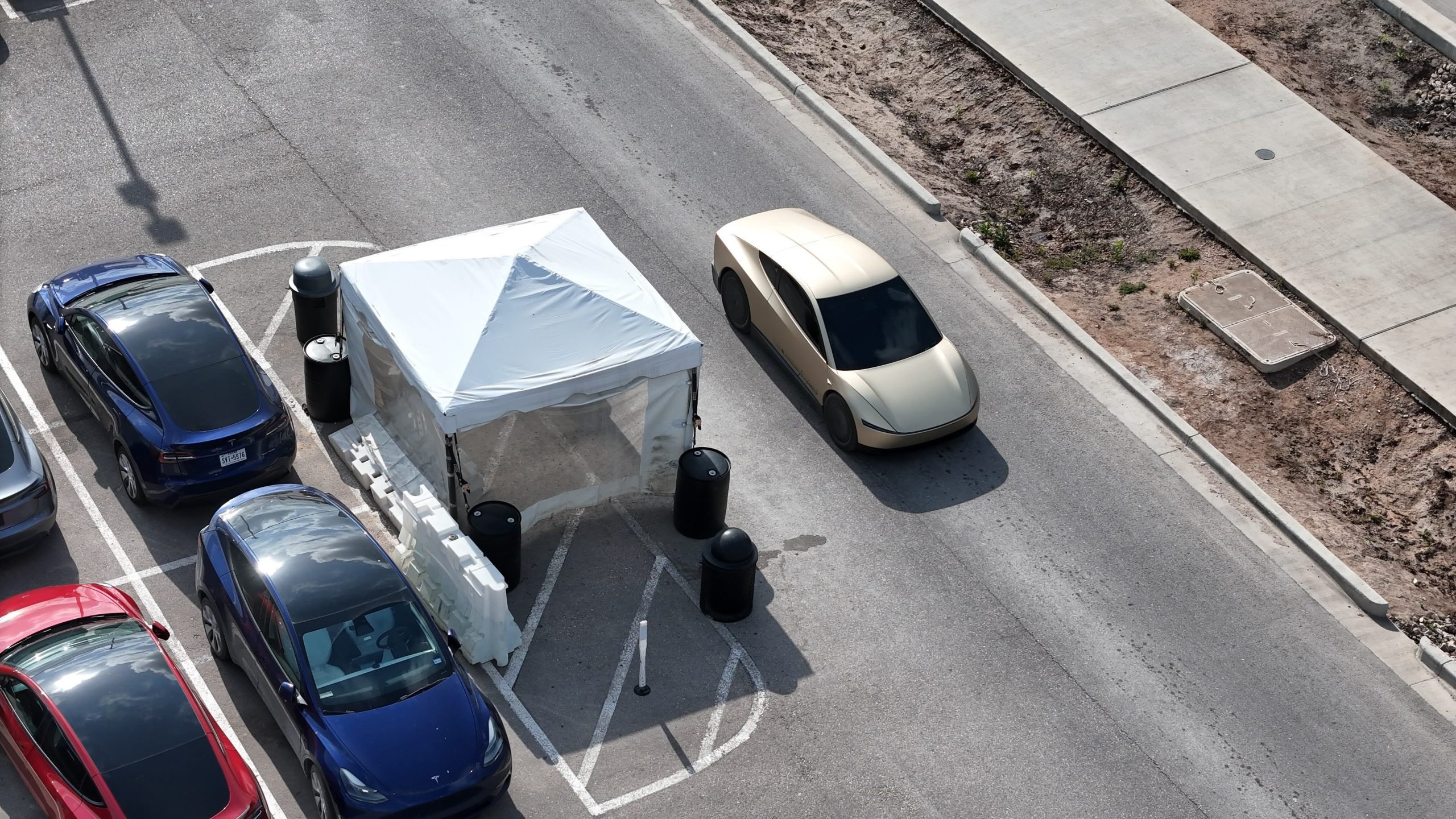
The Tesla Cybercab is the company’s first vehicle that is designed solely for autonomous driving. And while the spacious two-seater is expected to start volume production in 2026, the vehicle’s development seems to be moving at a steady pace.
This was hinted at in recent images taken by a longtime Tesla watcher at the Giga Texas complex.
Tesla Cybercab Production
The Cybercab will likely be Tesla’s highest volume vehicle, with CEO Elon Musk stating during the company’s Q1 2025 All-Hands meeting that the robotaxi’s production line will resemble a high-speed consumer electronics line. Part of this is due to Tesla’s unboxed process, which should make the Cybercab easy to produce.
Elon Musk expects Tesla to produce about 2 million Cybercabs per year. And while the vehicle is expected to see volume production at Giga Texas next year, the CEO noted that the vehicle will be manufactured in more than one facility when it is fully ramped.
No More Chase Cars
While the Cybercab is not yet being produced, Tesla is evidently busy testing the vehicle’s fully autonomous driving system. This could be hinted at by the Cybercabs that have been spotted around the Giga Texas complex over the past months. Following last year’s We, Robot event, drone operators such as longtime Tesla watcher Joe Tegtmeyer have spotted Cybercabs being tested around the Giga Texas complex.
At the time, videos from Giga Texas showed that the driverless Cybercabs were always accompanied by a manually driven Model 3 validation chase car. This was understandable considering that the Giga Texas complex features pedestrians, other cars, and construction areas. As per the drone operator in a recent post on social media platform X, however, Tesla seems to have stopped using chase cars for its Cybercab tests a few weeks ago.
Aggressive Tints
The reasons behind this alleged update are up for speculation, though it would not be surprising if the Cybercab’s autonomous driving system could now safely navigate the Gigafactory Texas complex on its own. Interestingly enough, the Cybercabs that were recently photographed by the drone operator featured very aggressive tint, making it almost impossible to make out the interior of the robotaxi.
This is quite interesting as other Cybercabs that have been spotted around Giga Texas were only equipped with semi-dark tints. One such vehicle that was spotted in February was even speculated to be fitted with an apparent steering wheel.
-
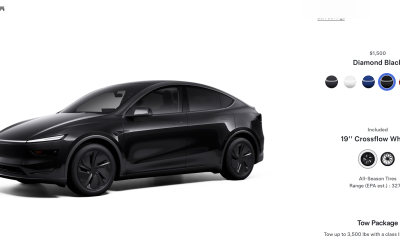
 News2 weeks ago
News2 weeks agoTesla rolls out new, more affordable trim of the Model Y Juniper in U.S.
-
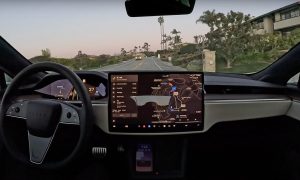
 News2 weeks ago
News2 weeks agoTesla expands Early Access Program (EAP) for early Full Self-Driving testing
-
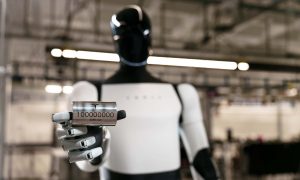
 News2 weeks ago
News2 weeks agoTesla celebrates key milestone for 4680 battery cell production cost
-
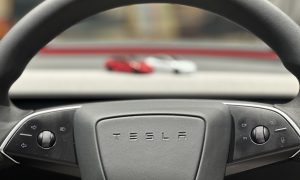
 Investor's Corner2 weeks ago
Investor's Corner2 weeks ago“Nothing Magnificent about Tesla (TSLA),” claims Jim Cramer
-

 News2 weeks ago
News2 weeks agoI took a Tesla new Model Y Demo Drive – Here’s what I learned
-
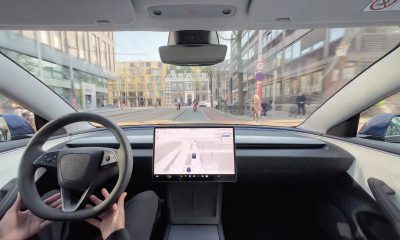
 News2 weeks ago
News2 weeks agoTesla Europe shares FSD test video weeks ahead of launch target
-
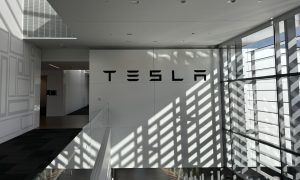
 News2 weeks ago
News2 weeks agoThis Tesla executive is leaving the company after over 12 years
-
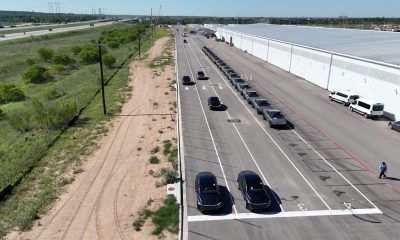
 News2 weeks ago
News2 weeks agoTesla’s Giga Texas vehicles now drive themselves to outbound lot


